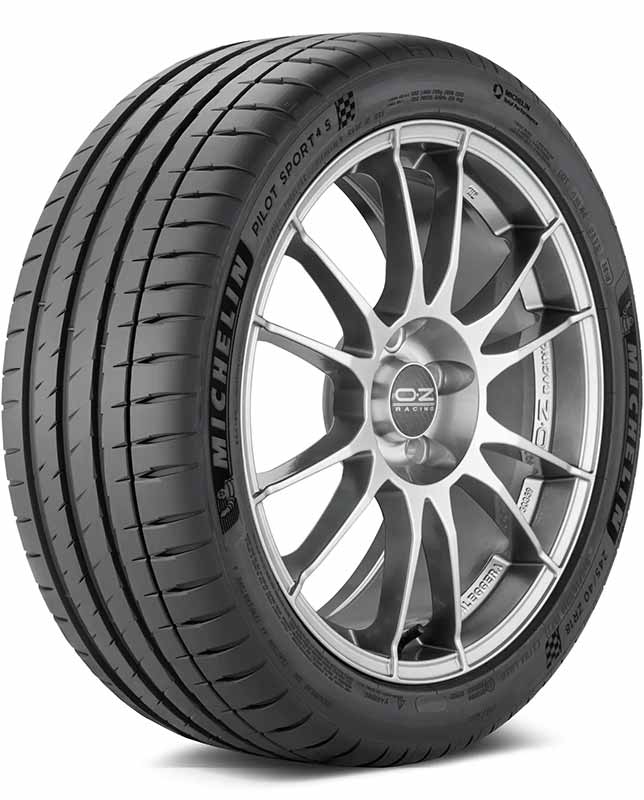Tires are the unsung heroes of our vehicles, silently bearing the weight and ensuring our journeys are smooth and safe. When you come across terms like “Load Range E,” it’s essential to understand what it means, especially if you’re someone who frequently tows or carries heavy loads or needs extra durability for off road adventures.
What Is Load Range E On A Tire?
Load Range E on a tire is a load rating, typically associated with a 10-ply rating. It’s designed to handle a higher load capacity of up to 2,470 to 3,415 lbs per tire at maximum inflation.
While this range ensures the tire can manage heavy loads and offers exceptional durability, it may result in a firmer ride quality compared to tires with lower load ranges.
In this article, we’ll unravel the meaning of Load Range E, its significance for towing and carrying heavy loads, and how it compares to other load ranges. We’ll also touch upon its performance in various conditions, including off-roading.

What is Load Range?
Load range is a measure of a tire’s weight-carrying capacity. In simple terms, it tells you how much weight a tire can safely support. Different vehicles have different weight requirements, so it’s essential to choose a tire with the right load range for your vehicle.
For example, a small passenger car might be fine with a lower load range, while a heavy-duty truck would need a tire with a higher load range.
Passenger Tires vs. Light Truck Tires
There’s a difference between passenger tires and light truck tires when it comes to load range:
- Passenger Tires: These are designed for cars, minivans, and some smaller SUVs. They usually have a lower load range because these vehicles don’t carry heavy loads.
- Light Truck Tires: Made for trucks, larger SUVs, and vans. These vehicles often carry heavier loads, so they need tires with a higher load range.
I’ve seen many drivers make the mistake of fitting their trucks with passenger tires, thinking they’re saving money. But in the long run, it can be unsafe and cost more due to frequent replacements. Always match the tire’s load range with your vehicle’s requirements.
Why is Load Range Important?
- Safety: A tire with the wrong load range can get damaged or burst under pressure, especially if the vehicle is overloaded. This can lead to dangerous situations on the road.
- Performance: The right load range ensures that your vehicle handles well, especially when carrying heavy loads. It affects braking, acceleration, and overall driving experience.
- Tire Lifespan: Using a tire with the correct load range can extend its life. An overloaded tire wears out faster and can even get damaged.
From my experience, understanding and choosing the right load range is very confusing and misunderstood by most people, and I understand why. While it is an indication of load carrying capacity and durability, it isn’t precise since it depends of tire size, inflation pressure, and individual tire construction.
Load Range and Ply Rating Chart
| Load Range | Ply Rating | Max Load Carrying Air Pressure |
| Standard Load (SL) | 4 | @ 36 PSI |
| Extra Load (XL) | 4 | @ 42 PSI |
| C1 | 6 | @ 50 PSI |
| C2 | 6 | @ 35 PSI |
| D1 | 8 | @ 65 PSI |
| D2 | 8 | @ 50 PSI |
| E1 | 10 | @ 80 PSI |
| E2 | 10 | @ 65 PSI |
| F1 | 12 | @ 95 PSI |
| G | 14 | @ 110 PSI |

Load Range E: A Deep Dive
When you delve into the world of tires, you’ll notice that Load Range E is a term that frequently pops up, especially if you’re dealing with trucks or larger vehicles. But what exactly does it mean? Let’s break it down in simple terms.
Load Range E and Weight Capacity
Load Range E is all about weight. Specifically, it tells you the maximum weight a tire can safely support when it’s inflated to its highest safe pressure. This is especially important for vehicles that carry heavy loads or tow trailers.
Load Range E Weight Capacity: Typically up to 2,470 to 3,415 lbs per tire at maximum inflation. This means it can handle more weight without getting damaged or wearing out prematurely.
I advise everyone to consider the weight they’ll be carrying, including passengers, cargo, and any trailers. This ensures they select a tire that won’t be overwhelmed by the load.
Ply Rating and Its Significance
Back in the day, tires were made using multiple layers (or plies) of rubber and fabric. The more layers a tire had, the stronger it was. Today, tire construction has evolved, but the concept of ply rating remains.
Load Range E Ply Rating: Load Range E tires are often referred to as “10 ply rated.” This doesn’t mean they have 10 physical layers. Instead, it indicates that the tire has the strength equivalent to a 10-ply tire from the past. Learn more about 10 Ply Tires and their Meaning
I tell people to think of load range as a strength and durability indicator. A higher ply rating means the tire is built to handle more stress and weight.
Recommended Tire Pressure for Load Range E
Every tire has an optimal pressure level that ensures it performs at its best.
Load Range E Tire Pressure: Load Range E1 tires require around 80 PSI to perform optimally. Load Range E2 tires use a lower tire pressure of approximately 65 PSI. The exact pressure can vary based on the tire brand, model, and weight of the vehicle they’re being used on.
When I check tires, one common issue I see is underinflation. Maintaining the right pressure not only ensures safety but also improves fuel efficiency and tire lifespan.
Speed Rating and Load Range E
Speed rating is a measure of the maximum speed a tire can handle safely. For Load Range E tires:
Load Range E Speed Rating:
- Q: Up to 99 mph (160 km/h)
- R: Up to 106 mph (170 km/h)
- S: Up to 112 mph (180 km/h)
- T: Up to 118 mph (190 km/h)
These tires are often designed for trucks and larger vehicles, which typically don’t reach high speeds. As a result, Load Range E tires might have a lower speed rating than some passenger car tires. However, they’re built for strength and durability, not speed.

Load Range E1 vs. E2
Both E1 and E2 fall under the Load Range E category, but they represent different weight capacities:
- E1: This stands for “Load Range E1” and typically represents a single rear wheel on a vehicle. It means the tire is designed to be used on vehicles that have one tire on each end of a rear axle.
- E2: This stands for “Load Range E2” and is indicative of a dual rear wheel setup, often seen on larger trucks and commercial vehicles. In this configuration, each end of the rear axle has two tires (dual wheels).
Key Differences
- Weight Capacity:
- E1: Being designed for single rear wheel setups, E1 tires have a lower weight capacity compared to E2.
- E2: These tires are meant for dual rear wheel configurations, so they have a higher weight capacity to accommodate the additional weight of larger vehicles and loads.
- Vehicle Type:
- E1: Commonly found on lighter trucks, large SUVs, and some vans.
- E2: Typically used on heavy-duty trucks, commercial vehicles, and RVs that require dual wheels for added stability and weight distribution.
- Tire Configuration:
- E1: Single tire per end on the rear axle.
- E2: Dual tires per end on the rear axle.
If you’re replacing tires on a heavy-duty truck with a dual rear wheel setup, opting for E2 is crucial. Using E1 in such a scenario could lead to overloading the tire, affecting safety and tire lifespan.

Load Range E vs. Load Range D
- Weight Capacity: Higher weight capacity than Load Range D. This means they can handle more weight, making them suitable for heavier vehicles or those carrying substantial loads.
- Ply Rating: Often referred to as “10 ply rated,” Load Range D is typically “8 ply rated.” Remember, this doesn’t mean they have 10 or 8 physical layers, but it’s an indicator of their strength.
- Usage: Load Range D is more common for lighter trucks, SUVs, and some vans. On the other hand, Load Range E is for heavier trucks and vehicles that tow trailers or carry heavy cargo.
Load Range E vs. Load Range F
- Weight Capacity: As expected, Load Range F tires have an even higher weight capacity than E. They’re designed for the heaviest loads and are often found on commercial vehicles and large RVs.
- Ply Rating: Load Range F tires are typically “12 ply rated,” indicating they’re even stronger and more durable than Load Range E.
- Usage: These are for the heaviest duty trucks and commercial vehicles. If you’re driving a large RV or a commercial truck, Load Range F might be the way to go.
Load Range C vs. Load Range E
- Weight Capacity: Load Range C tires have a moderate weight capacity, making them suitable for lighter off-road vehicles or those not carrying significant additional equipment.
- Ply Rating: Load Range C tires are typically referred to as “6 ply rated.” While this doesn’t mean they have six physical layers, it’s an indicator of their relative strength and durability.
- Usage in Off-Roading: Load Range C tires are common for lighter off-road vehicles, like smaller SUVs or jeeps that aren’t heavily loaded. They offer a balance between flexibility and strength, which can be beneficial for certain terrains.
Resources
Below are some links you may find helpful when learning about tires:
- All about load range e tires – Priority Tire
- Choosing the right tire based on load range for your vehicle – Michelin
Final Thoughts
The world of tires is filled with terminologies that can sometimes be overwhelming. However, understanding terms like Load Range E is crucial, especially if you’re someone who relies on your vehicle for heavy-duty tasks.
Whether you’re towing a trailer, carrying heavy equipment, or venturing off-road, knowing the load range of your tire ensures you’re equipped for the task. Always prioritize safety, and when in doubt, consult experts or your vehicle’s manual.
Good luck and happy motoring.




